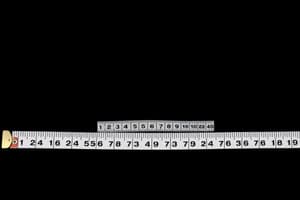Podcast
Questions and Answers
What distinguishes displacement from distance?
What distinguishes displacement from distance?
- Displacement is a measure of speed over time.
- Displacement has a direction while distance does not. (correct)
- Displacement measures total road length while distance is a straight line.
- Distance is always greater than displacement. (correct)
Which statement correctly defines speed?
Which statement correctly defines speed?
- Speed accounts for the direction of travel.
- Speed is a vector quantity representing the rate of distance change. (correct)
- Speed measures how fast an object moves without considering direction. (correct)
- Speed is the straight line distance covered by an object.
How does velocity differ from speed?
How does velocity differ from speed?
- Velocity is always greater than speed. (correct)
- Velocity measures displacement per unit time and includes direction. (correct)
- Velocity includes the distance covered.
- Velocity represents only horizontal motion.
What was the start time for the lap in seconds?
What was the start time for the lap in seconds?
If a student takes a winding route to school, which of the following statements is true?
If a student takes a winding route to school, which of the following statements is true?
What is true about a scalar quantity?
What is true about a scalar quantity?
What is the finish time converted to seconds?
What is the finish time converted to seconds?
How was the total time taken to complete the lap calculated?
How was the total time taken to complete the lap calculated?
Which instrument is primarily used for measuring small distances of a few centimetres?
Which instrument is primarily used for measuring small distances of a few centimetres?
What was the total time taken to complete the lap?
What was the total time taken to complete the lap?
Why are multiple measurements taken in physics?
Why are multiple measurements taken in physics?
Which measuring instrument can determine the volume of an irregular shape?
Which measuring instrument can determine the volume of an irregular shape?
To measure lengths of tens of metres, which instrument is most appropriate?
To measure lengths of tens of metres, which instrument is most appropriate?
What can be said about the information regarding the track length?
What can be said about the information regarding the track length?
Which of the following reflects a common misconception in making calculations?
Which of the following reflects a common misconception in making calculations?
What is the smallest unit of length that can be measured using a ruler?
What is the smallest unit of length that can be measured using a ruler?
Which of the following is NOT typically used to measure volume?
Which of the following is NOT typically used to measure volume?
In the conversion of the finish time, which step is essential?
In the conversion of the finish time, which step is essential?
Measuring cylinders are best suited for which type of measurement?
Measuring cylinders are best suited for which type of measurement?
When using a tape measure, what type of distances is it best suited for?
When using a tape measure, what type of distances is it best suited for?
What type of distance measurement would be best accomplished using a trundle wheel?
What type of distance measurement would be best accomplished using a trundle wheel?
What is true about velocity?
What is true about velocity?
Which of the following is a vector quantity?
Which of the following is a vector quantity?
The weight of an object is considered which type of quantity?
The weight of an object is considered which type of quantity?
How do mass and weight differ in terms of their classifications?
How do mass and weight differ in terms of their classifications?
Which of the following pairs correctly outlines a scalar and its vector counterpart?
Which of the following pairs correctly outlines a scalar and its vector counterpart?
The term 'displacement' refers to which of the following?
The term 'displacement' refers to which of the following?
Which of the following quantities does NOT change with varying gravitational fields?
Which of the following quantities does NOT change with varying gravitational fields?
What is the significance of a quantity being classified as a vector?
What is the significance of a quantity being classified as a vector?
What is the magnitude of the resultant force calculated using Pythagoras' theorem?
What is the magnitude of the resultant force calculated using Pythagoras' theorem?
How is the direction of the resultant vector determined in this calculation?
How is the direction of the resultant vector determined in this calculation?
What is the angle of the resultant force from the horizontal?
What is the angle of the resultant force from the horizontal?
Which method is suggested to find the resultant force more accurately if one is confident in their skills?
Which method is suggested to find the resultant force more accurately if one is confident in their skills?
If asked to use a specific calculation method in a problem, what must be done?
If asked to use a specific calculation method in a problem, what must be done?
Flashcards are hidden until you start studying
Study Notes
### Measuring Length and Volume
- Rulers, tape measures, and trundle wheels are used to measure different lengths.
- Measuring cylinders are used to measure liquid volumes and can be used to determine the volume of irregular shapes.
- To calculate the volume of an irregularly shaped object, submerge it in a measuring cylinder filled with a known volume of water.
- Note the change in water volume - this is the volume of the irregular object.
Scalars & Vectors
- Scalar quantities have magnitude only.
- Vector quantities have both magnitude and direction.
Distanceis a scalar quantity.Displacementis a vector quantity.Speedis a scalar quantity.Velocityis a vector quantity.Massis a scalar quantity.Weightis a vector quantity (force).- Other examples of vector quantities include: force, acceleration, momentum, electric field strength.
- Other examples of scalar quantities include: energy, volume, density, temperature, power.
Calculating with Vectors
- You can add vectors using the graphical method or by calculation.
- To add two vectors using the graphical method, connect the vectors' tails, drawing the second vector from the head of the first.
- The resultant vector is the line drawn from the tail of the first to the head of the second vector.
- The calculation method involves using Pythagoras' theorem and trigonometry to calculate the magnitude and direction of the resultant force.
Studying That Suits You
Use AI to generate personalized quizzes and flashcards to suit your learning preferences.




